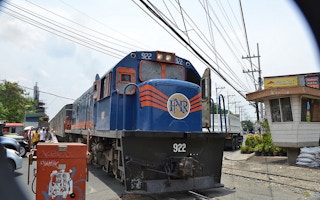Along Manila railroad tracks, people take selfies and videos of the sleek, new locally-built hybrid train which runs on both electricity and diesel.
On the train side are bragging rights easily read by pedestrians and motorists: Department of Science and Technology (DOST). Bragging can be excused in this case because young Filipino engineers have shown they can build a DIY, top-of-the-line train.
While it might not be exciting for the rest of the world which has embraced train travel for over 100 years, it is a significant development for the country’s stalled metal and steel industry. It is also good news for Metro Manila’s 12 million population in urgent need of affordable mass transport.
In a limited window before rush hour, the hybrid electric-diesel train, on August 4, took its longest test drive since it was launched last June running 1.3 kilometres from the Tutuban Station in Manila to Pasay Road Station in the central financial district of Makati.
“In many places, the [poor] rail conditions slow it down (at 20 kilometres per hour instead of 60-80 kph),” says engineer Jojit Velasco of DOST’s Metals and Industry Research and Development Center (MIRDC) which built the prototype.
The train stops as technicians raise overhanging electric cables that graze its roof or clip tree branches that scratch its doors. The hybrid has to blow its horn a lot because informal settlers living along the tracks are not used to its muted engines.
Power sharing is 50:50 — the electric battery kicks in when the needle points to 200 kilowatts, halfway to the genset’s 500-kw rating, says electrical engineer Pablo Acuin, the project leader.
Approaching stations, the train slows down as engineers measure safety parameters, part of performance tests that will take up to December.
“We’re testing the protocols. For example, the top speed, the braking distance at different speeds and loads,” says electrical engineer Rodnel Tamayo, head of MIRDC’s materials and process research division.
An independent body will certify if it’s safe for the public, adds engineer Jonathan Puerto, MIRDC’s deputy executive director for R&D.
The prototype hybrid train is being tested on tracks of the Philippine National Railways, which has about two billion pesos (around US$43 million) budget, including for new trains in 2017. Puerto hopes “they will include the hybrid’s design and specs so that locals can bid”.
This piece was produced by SciDev.Net’s South-East Asia & Pacific desk and was republished with permission.










